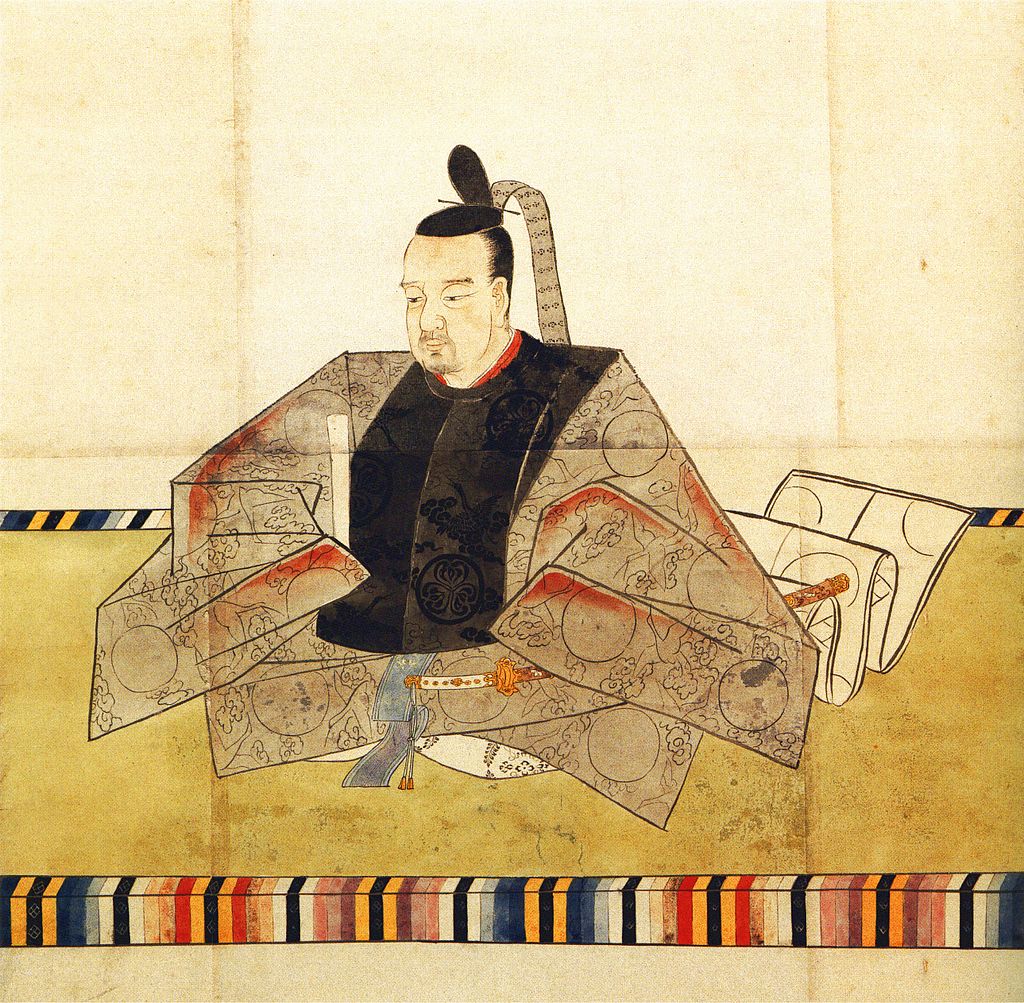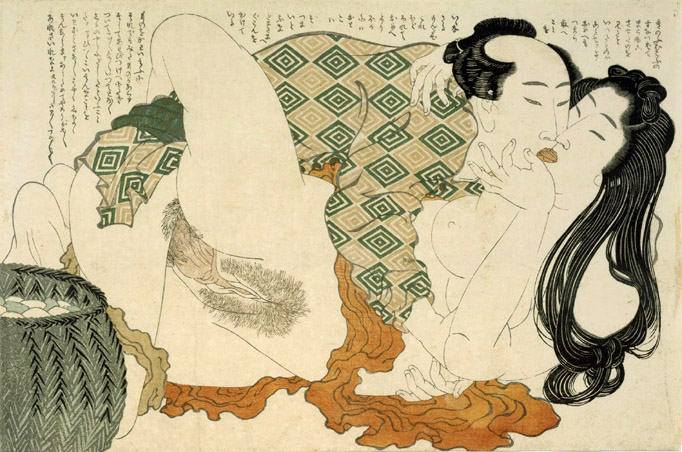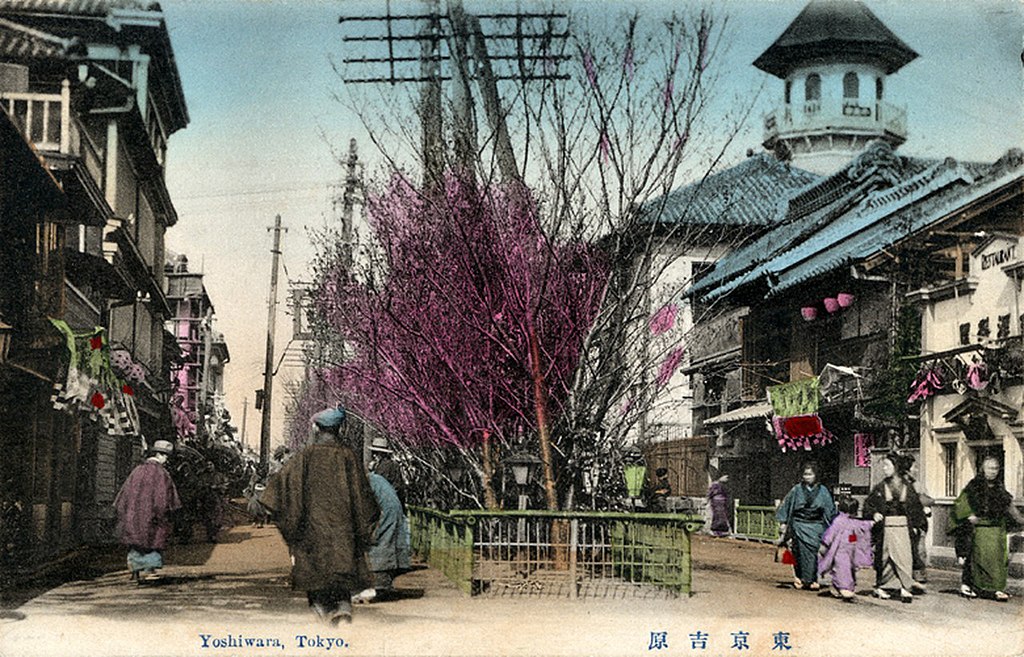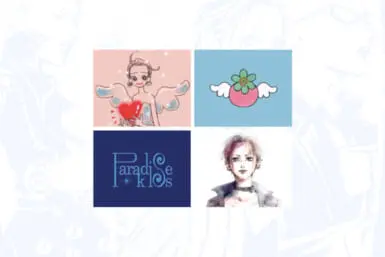“My body sticks out in one place. I would like to thrust the part of my body that sticks out into the part of your body that is empty and fill it up.” So spoke the god Izanagi to his wife Izanami in the Kojiki, a sacred collection of Japanese myths, legends and genealogies composed in 712. And also, for the longest time, the closest thing to a sex education manual available in Japan.
It took until the Edo Period (1603–1868) for more sex education options to become available in the country, though access to them often depended on your social status.
Private Sex Tutors (Shogun)
Once Tokugawa Ieyasu finalized the unification of Japan and established the Tokugawa shogunate in the early 17th century, Japan entered an era of more than 250 years of peace. After that, the role of the shogun changed from military commander to CEO of Japan Inc., with his primary duties being the supervision of Japan’s bureaucratic machine and, most importantly, leaving a male heir behind to guarantee a peaceful transition of power after his death. Or better yet, a handful of heirs since, back then, child mortality was high and life expectancy low.
That’s why the sex education of the shogun was treated with the utmost importance. Once it was decided that the time was right, a sex tutor was called in. She’d start by getting naked in front of the future ruler of Japan, explaining how everything worked down there and letting him explore her body. As time went on, she’d also help the young man get familiar with how his equipment worked, ultimately culminating in sex once he came of age. The “student” usually had more than one sex teacher and chose one for each lesson depending on his mood.

Kano Osanobu, Portrait of Tokugawa Ienari
These tutors weren’t the shogun’s only source of information about sex but definitely a favored one. It was a highly respectable position and any children that resulted from it (which happened often) were considered the shogun’s legitimate offspring and given lands and titles. The biggest beneficiary of these sex tutors was probably the 11th shogun Tokugawa Ienari, who used everything he learned to father a grand total of 26 sons and 27 daughters with his wives and mistresses.
Erotic Shunga Art (Townspeople and Peasants)
“Shunga” (lit. “spring pictures”) is an erotic subgenre of ukiyo-e woodprints and paintings that exploded in popularity during the Edo Period. This was primarily due to the rise of the merchant class and massive urban growth, resulting in the creation of a feudal middle class with plenty of disposable income and lots of free time, at least when compared to the farmers. Hungry for entertainment, their options were to either sit around and wait for the internet to be invented or start commissioning erotic art and literature. They went with the second option.

Katsushika Hokusai, The Adonis Plant (Fukujuso)
Shunga woodprints and paintings were primarily meant to be pornography, but they were also used for comedy or political commentary. More interestingly, though, some were created as sex education material. A feature of shunga that (thankfully figuratively) hits you in the face right off the bat is everyone’s massively enlarged genitalia. Huge phalluses have appeared in Japanese art for centuries before Edo-period shunga, but enlarged vulvas were mostly new, and it’s suspected that, in some cases, it was to provide an educational visual representation of the act of lovemaking. In other cases, experts say, it was simply because people found these super-sized genitalia hilarious.
The educational shunga were usually accompanied by text, hopefully explaining that many of the positions depicted in the old-timey smut were impossible and were just a way to give “readers” a better understanding and view of what goes where. These manuals would apparently be given or lent to newlyweds and thanks to traveling libraries that visited rural areas, they also reached townspeople and peasants alike.
Red-Light Districts (Everyone)
Another popular use of shunga was as illustrations in guides to red-light districts like Yoshiwara, originally established by the government in the 17th century to contain and control the city’s sex work. You may know it as the setting of the Entertainment District Arc of the Demon Slayer anime, but during the Edo Period, the only way for people to learn about Yoshiwara was through the aforementioned guides or by visiting it yourself. Still, it was usually a good idea to do some research first.

Japanese hand-tinted antique postcard of the Yoshiwara licensed prostitution area of Tokyo during the Taisho Era.
Guides to Yoshiwara explained not just which brothels were the cleanest etc., but also the unique culture of the district. Within the walls of Yoshiwara, there were no social classes and the clients there included everyone from peasants to monks, samurai and aristocrats, all of them looking to experience, learn about, or in some cases teach their sons about sex. Everyone was welcome as long as they had money. But they were expected to carry themselves in accordance with the ideas of iki, an aesthetical concept of effortless elegance and a kind of aloofness explained in great detail in many Edo Period brothel guides. Those who failed to adhere to iki were thought of as rubes and were targeted by disreputable joints looking to bilk them for everything they had. Either way, everyone visiting Yoshiwara in search of sex got screwed in the end.









